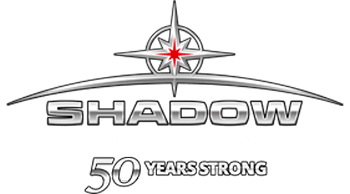Supply chain shipping is complex. Delivering goods and products brings with it a myriad of intricacies that can make for a very complicated process. And that’s where the utility of drayage services comes into play. Whether you’re dealing with port container drayage, shuttle drayage, intra-carrier drayage – or anything in between – the usefulness of this service to transport valuable commodities from point A to point B is indispensable.
This form of intermodal shipping is a valuable drayage service in Canada. As such, it’s important to understand its practicality and effectiveness. Keep reading to learn more about container drayage and intermodal shipping.
A Brief History of Drayage Services
The earliest drayage services can be traced back to the 16th century. It was at this point that commerce and trade in Europe was beginning to expand. With the arrival of mechant shipping businesses transporting products from foreign lands, the demand for fast and easy haulage of those products from their respective docks became crucial to businesses that specialized in importing and exporting goods.
Drayage bears reference to products that are moved across small distances, which in the end, arrive in the customer’s hands. In a more contemporary manner of speaking, drayage refers to the delivery of goods and products from a harbour or airplane, to its next location. The location in question could be anything: a port, the consumer, a storagehouse, etc.
The syllable “dray” comes from cart, which as an expression means, “to pull” or “haul.”
Intermodal Drayage Classifications
There are many modes of drayage transportation. Each is designed for a unique purpose in the overall intermodal shipping process.
View the classifications below to learn more:
- Inter-carrier drayage: This drayage service is the transportation of products between carriers. For instance, it can be the delivery of goods from a harbour or a port, to a storage facility or rail station.
- Expedited drayage: This is the process of transporting and delivering freight that is time-sensitive. The aim of expedited drayage is to deliver products to their destination efficiently and as as quickly as possible.
- Shuttle drayage: Shuttle drayage is the process of transporting an intermodal unit from its initial hub to a provisional destination. This service is typically used if the initial hub is full.
- Intra-carrier drayage: The delivery of products within a single company. The delivery takes place between two locations that are owned by the same transporter.
- Port drayage: This shipment is the delivery to and from a port. It’s typically utilized for shipping containers from a production site to a pier or dock in a port.
Challenges for Drayage Services
Every industry has its challenges – and drayage is certainly no exception. However, the quality of a job is equal to the resolved challenges that the job presents. And that’s why we here at Shadow Group aren’t just a shipping and drayage company, we’re problem solvers.
Insufficient Number of Qualified Drayage Carriers
Many shipping companies lack qualified drayage carriers. This results in congestion at ports which can halt shipments and cause customer frustration. At Shadow Group, we have 50 years of trucking experience. As such, our team of truckers, operators, and technicians have the skills and knowledge to ensure a smoother delivery – every time.
Inadequate Parts and Equipment
Another challenge facing drayage companies is faulty equipment. Shipping is not always a linear process, there are many ups and downs that accommodate a delivery. As such, the right parts and equipment is absolutely essential. At Shadow Group, we own over 500 pieces of high-grade industry equipment. Everything from container chassis’ and low beds, to flat decks and pneumatic tanks are available.
Drayage Costs
It would be an inaccurate statement to provide you with a single, end all be all, dollar figure for drayage costs. This is due to the fact that many components go into a delivery which will affect the final price point. Some factors to consider include:
- The delivery distance
- Cargo weight
- Equipemnt required to transport the container
- The truck and the driver
- Return trips, and more
Due to these, as well as any other unforeseen factors, it would be impossible to give an accurate price assessment without a professional getting the correct information from you. However, once you understand the nuances of your shipment, a quote can be provided by an expert when you inform them of your needs and requirements.
Final Thoughts
The necessity of drayage services is evident. We need them to ensure our products are delivered, our shelves remain stocked, and so much more. As such, if you’re in need of drayage, transloading, logistic services, or anything else related to shipping and delivery services – Shadow Group is here to help.
We have 50 years of experience in the trucking industry with hundreds of pieces of premium equipment at your service. Contact us today for additional information.
